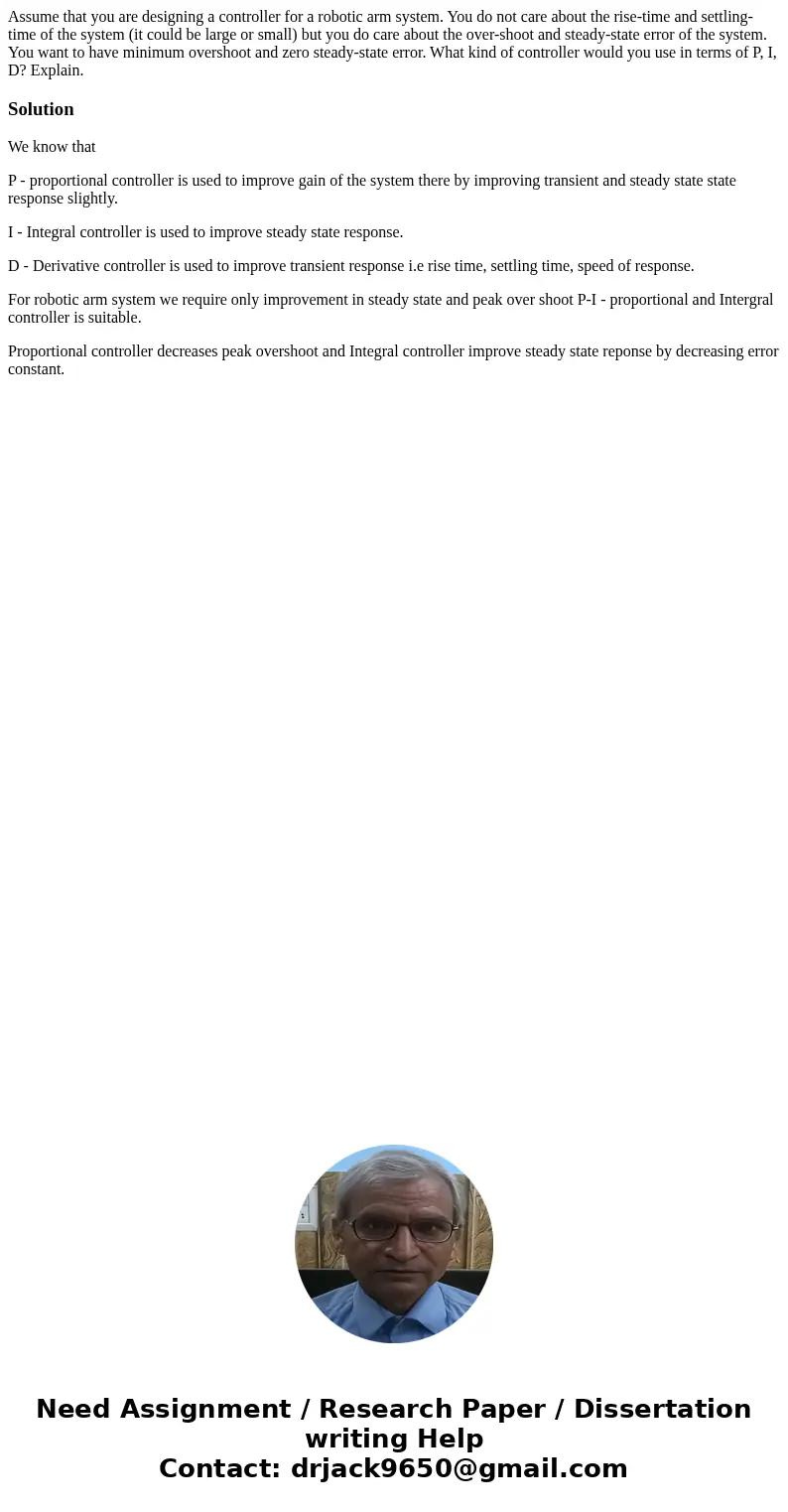Assume that you are designing a controller for a robotic arm
Assume that you are designing a controller for a robotic arm system. You do not care about the rise-time and settling-time of the system (it could be large or small) but you do care about the over-shoot and steady-state error of the system. You want to have minimum overshoot and zero steady-state error. What kind of controller would you use in terms of P, I, D? Explain.
Solution
We know that
P - proportional controller is used to improve gain of the system there by improving transient and steady state state response slightly.
I - Integral controller is used to improve steady state response.
D - Derivative controller is used to improve transient response i.e rise time, settling time, speed of response.
For robotic arm system we require only improvement in steady state and peak over shoot P-I - proportional and Intergral controller is suitable.
Proportional controller decreases peak overshoot and Integral controller improve steady state reponse by decreasing error constant.

 Homework Sourse
Homework Sourse